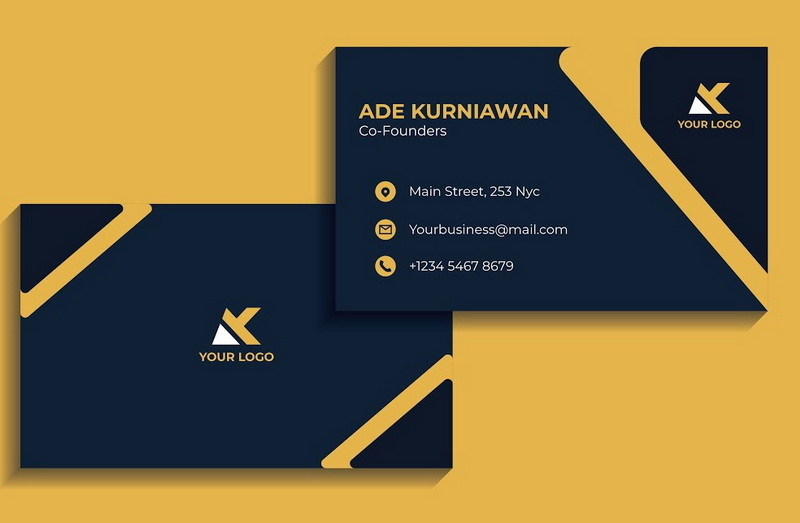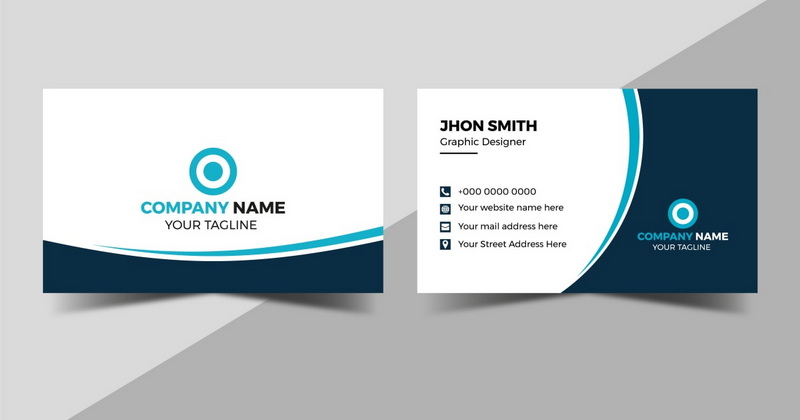Content Menu
● Key Elements of a Great Business Card
● Design Trends for 2025
● Practical Tips for Designing Your Business Card
● The Importance of Networking with Business Cards
● Digital Business Cards: The Future of Networking
● Cultural Considerations in Business Card Design
● Conclusion
● Questions & Answers
>> 1. What should I include on my business card?
>> 2. How can I make my business card stand out?
>> 3. What materials are best for business cards?
>> 4. Should I include social media links on my business card?
>> 5. How often should I update my business cards?
>> 6. Can digital business cards replace physical ones?
>> 7. How do I ensure my business card is culturally appropriate?
● Citations:
In today's fast-paced business environment, a business card remains an essential tool for networking and establishing a professional identity. A well-designed business card can leave a lasting impression and serve as a powerful marketing tool. This article explores the key elements that contribute to creating an effective business card, current design trends, and practical tips to ensure your card stands out.

Key Elements of a Great Business Card
A great business card is more than just a piece of cardstock with your name and contact information. It should effectively convey your brand identity while providing essential information in a visually appealing manner. Here are the crucial components to consider:
- Logo: Your logo is the visual representation of your brand. It should be prominently displayed on your business card to enhance brand recognition. Ensure that the logo is clear and legible, even in small sizes.
- Contact Information: Include your name, job title, phone number, email address, and website. Ensure that this information is clear and easy to read. Consider including a physical address if relevant to your business.
- Tagline or Description: A brief tagline or description of your services can help convey what you do at a glance. This adds context to your contact information and helps recipients quickly understand your role or business.
- Visual Design: The overall design should reflect your brand's personality. Use colors, fonts, and layouts that align with your brand identity. Consistency across all marketing materials is key to building a strong brand image.
- Call-to-Action (CTA): Encourage recipients to take action, whether it's visiting your website or following you on social media. This can be as simple as "Visit us at [website URL]" or "Follow us on LinkedIn."
Design Trends for 2025
As we move into 2025, business card designs are evolving to include innovative elements that capture attention. Here are some notable trends:
- Non-Traditional Shapes: Moving away from the standard rectangular shape can make your card more memorable. Consider circular, square, or custom shapes that reflect your brand. For instance, a real estate agent might use a house-shaped card, while a tech startup could opt for a futuristic design.
- Bold Colors and Textures: Vibrant color palettes and textured finishes can make your card stand out in a stack. Metallic foiling or embossed lettering adds a luxurious touch, conveying professionalism and sophistication.
- Sustainable Materials: Eco-friendly cards made from recycled materials resonate with environmentally conscious consumers. This trend reflects a growing commitment to sustainability in business practices and can appeal to clients who value green initiatives.
- Interactive Elements: Incorporating QR codes or NFC chips allows recipients to easily access your website or digital portfolio, bridging the gap between physical and digital networking. This can be particularly useful for creatives who want to showcase their work without carrying bulky portfolios.
- Minimalist Aesthetics: Clean lines and ample white space can create an elegant look that emphasizes key information without overwhelming the recipient. This style is ideal for industries where simplicity and clarity are paramount, such as finance or law.

Practical Tips for Designing Your Business Card
Creating an effective business card involves careful consideration of design elements and practical aspects. Here are some tips to guide you:
- Choose the Right Size: While the standard size is 3.5 x 2 inches, consider unique dimensions that align with your brand image. However, ensure that any non-standard size still fits comfortably in a wallet or card holder.
- Prioritize Readability: Use legible fonts and ensure there is enough contrast between text and background colors for easy reading. Avoid overly ornate fonts unless they are integral to your brand identity.
- Limit Information: Avoid clutter by focusing on essential details. Too much information can overwhelm recipients and detract from your key message.
- Use High-Quality Materials: Invest in quality cardstock or alternative materials like wood or plastic for durability and a premium feel. The tactile experience of your card can leave a lasting impression.
- Test Print Samples: Before finalizing your design, print samples to evaluate how they look in real life. This helps ensure color accuracy and overall quality, preventing costly mistakes.
The Importance of Networking with Business Cards
Business cards play a vital role in networking by providing an easy way to share contact information during professional encounters. They serve as tangible reminders of conversations and connections made at events, meetings, or casual interactions. A well-designed card can spark interest and facilitate follow-up communication, enhancing relationship-building efforts.
Networking with business cards is not just about exchanging cards; it's about building relationships that can lead to future opportunities. Here are some strategies to maximize the impact of your business cards during networking events:
- Engage in Meaningful Conversations: Before exchanging cards, take the time to understand the other person's interests and how your services might align with their needs.
- Follow Up: After an event, send a personalized email or message to new contacts, referencing your conversation and reiterating your interest in connecting further.
- Use Social Media: Connect with new contacts on LinkedIn or other relevant platforms to expand your professional network and maintain visibility.
Digital Business Cards: The Future of Networking
In addition to traditional physical cards, digital business cards are gaining popularity. These can be shared via email, messaging apps, or through QR codes on physical cards. Digital cards offer several advantages:
- Environmental Benefits: They eliminate the need for paper, aligning with sustainable practices.
- Easy Updates: Information can be updated instantly without the need for reprints.
- Interactive Features: Digital cards can include links to websites, social media profiles, or even video introductions.
However, physical cards still hold a unique place in networking due to their tactile nature and ability to be easily shared in person. A combination of both physical and digital cards can provide the best of both worlds, offering flexibility and versatility in different networking scenarios.
Cultural Considerations in Business Card Design
When designing business cards for international use, consider cultural differences that might impact how your card is perceived. For example:
- Language: Include translations of your information if you frequently interact with clients who speak different languages.
- Color Choices: Be aware that certain colors have different meanings in various cultures. For instance, while white is often associated with purity in Western cultures, it symbolizes mourning in many Asian cultures.
- Business Etiquette: In some cultures, it's customary to use both hands when exchanging cards or to bow slightly as a sign of respect.
Understanding these nuances can help ensure that your business card is well-received across different cultural contexts.
Conclusion
In conclusion, a great business card is an essential tool for anyone looking to make meaningful connections in their professional life. By incorporating key elements such as a strong logo, clear contact information, and thoughtful design choices aligned with current trends, you can create a memorable card that effectively represents your brand. Remember that networking is not just about exchanging cards; it's about building relationships that can lead to future opportunities.

Questions & Answers
1. What should I include on my business card?
- Include your name, job title, contact information (phone number, email), logo, and potentially a tagline or description of services.
2. How can I make my business card stand out?
- Use unique shapes, bold colors, textures, and interactive elements like QR codes to create an eye-catching design.
3. What materials are best for business cards?
- High-quality cardstock is standard; however, consider sustainable options like recycled materials or innovative materials like wood or fabric for uniqueness.
4. Should I include social media links on my business card?
- Yes, including relevant social media links can enhance connectivity but ensure they do not clutter the design.
5. How often should I update my business cards?
- Update your business cards whenever there are significant changes in your contact information or branding elements to keep them relevant.
6. Can digital business cards replace physical ones?
- While digital cards offer convenience and sustainability, physical cards still provide a unique tactile experience and are often preferred in face-to-face networking scenarios.
7. How do I ensure my business card is culturally appropriate?
- Research cultural norms related to color, language, and business etiquette to ensure your card is well-received internationally.
Citations:
1. https://www.brandly.com/blog/what-to-put-on-a-business-card/
2. https://looka.com/blog/business-card-trends/
3. https://github.com/haoweiguang/haoweiguang.github.io/blob/master/index.html
4. https://www.primoprint.com/blog/10-crucial-parts-to-a-business-card-design/
5. https://tweakyourbiz.com/posts/business-card-trends-for-2025-innovations-in-networking
6. https://bbs.gter.net/forum.php?mod=viewthread&action=printable&tid=402330
7. https://www.shopify.com/blog/business-card-ideas
8. https://www.moo.com/blog/inspiration/best-business-cards-trends
9. https://blog.csdn.net/wizardforcel/article/details/142410177































